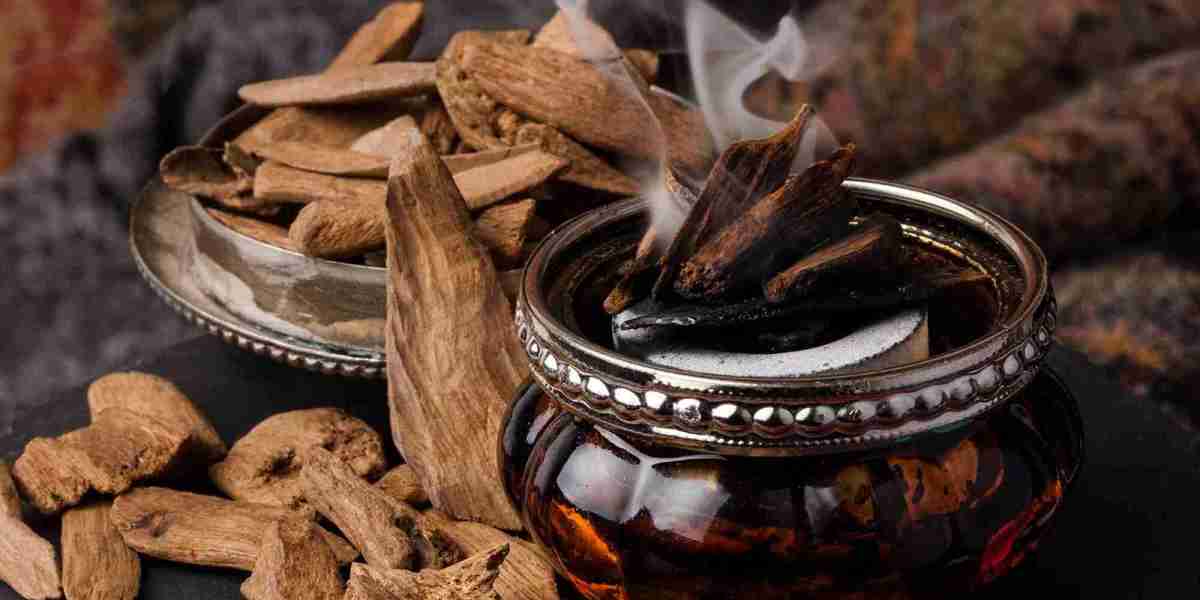Oud, often referred to as "liquid gold," holds a sacred place in the world of perfumery. Rich, complex, and deeply captivating, oud has enchanted civilizations for centuries. Its origin, development, and modern interpretation in perfumery speak volumes about the timeless appeal of this precious essence.
The Journey Begins with Agarwood
The story of oud begins with the Aquilaria tree, native to Southeast Asia. When this tree becomes infected with a specific type of mold (Phialophora parasitica), it produces a dark, aromatic resin as a defense mechanism. This resin-suffused wood is what we call agarwood, the raw material from which oud oil is derived.
It can take decades for agarwood to form naturally, making it incredibly rare and valuable. Sustainable cultivation and ethical harvesting have become crucial as demand for oud increases globally.
Oud Through History and Culture
Historically, oud has played a prominent role in religious ceremonies, traditional medicine, and royal courts across the Middle East, South Asia, and parts of East Asia. In Islamic traditions, burning oud chips during special occasions is common, symbolizing purity and luxury.
Kings, sultans, and mystics have worn oud as a mark of status and spiritual depth. Even today, it retains an aura of prestige and reverence in high-end perfumery and wellness circles.
The Art of Oud Extraction
Extracting oud oil from agarwood is a meticulous process. The two most common methods are steam distillation and hydro-distillation. The wood is soaked, heated, and distilled over time to extract the oil, which is then aged—much like fine wine—to develop its signature depth and richness.
High-quality oud oils can exhibit a wide spectrum of olfactory notes: smoky, woody, leathery, balsamic, and even sweet. Each variation depends on the region, tree species, and extraction process.
Oud in Modern Perfumery
Today, oud is a signature ingredient in niche and luxury fragrances. While traditional Middle Eastern perfumes focus on the bold and unadulterated essence of oud, Western interpretations often blend it with florals, spices, and citrus to create more universally appealing compositions.
The versatility of oud has led to an explosion in artisanal blends and luxury oud oils tailored for connoisseurs who appreciate both heritage and innovation in scent.
Saeed Anwar’s Foray into the World of Oud
Saeed Anwar, the legendary Pakistani cricketer known for his elegance on the pitch, has recently ventured into the world of fragrance with the launch of his own oud brand under the name Saby Saeed Anwar. This unique initiative reflects his personal affinity for tradition, spirituality, and excellence.
Through Saby Saeed Anwar, he introduces a refined selection of artisan oud oils designed for those who value authenticity and heritage. With a focus on purity and sophistication, saeed anwar oud oils offer a sensory journey rooted in tradition yet crafted for the modern fragrance lover.
Why Oud Continues to Captivate
Timeless Appeal: Oud transcends trends. It speaks of stories, lands, and legacies.
Cultural Significance: Deeply tied to rituals and spirituality, oud is more than a scent—it's a symbol.
Luxury and Rarity: Its scarcity and labor-intensive extraction make oud one of the most luxurious fragrance ingredients.
Unmatched Complexity: No two oud oils smell exactly alike. Each has its unique identity and evolution over time.
Final Thoughts
Understanding oud is about more than just fragrance—it's about tracing a journey that starts deep within a forest and ends on the pulse points of those who appreciate true olfactory artistry. Whether you’re new to oud or a long-time admirer, brands like Saby Saeed Anwar are opening doors to experience this ancient treasure through a contemporary lens.
Oud is not just a scent—it's a legacy.




